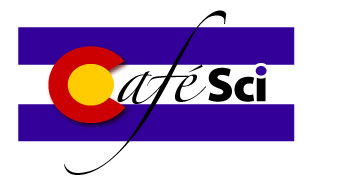VINCE MATTHEWS became State Geologist and Director of the Colorado Geological Survey in 2004. He received Bachelors and Masters degrees in Geology from the University of Georgia, a Ph. D. from the University of California, Santa Cruz, and is a graduate of the Stanford Executive Program. Dr. Matthews held tenured positions at two universities and has taught geology at the University of California, University of Northern Colorado, Arizona State University, the Frank Lloyd Wright School of Architecture, and the University of Texas of the Permian Basin. As an executive in the natural resources industry for Amoco, Lear, Union Pacific, and Penn Virginia; Matthews explored for oil & gas in virtually every basin in the U.S., including Alaska and the Gulf of Mexico. Part of his experience in the natural resources industry included responsibility for coal, lime, and limestone activities in New Jersey, Virginia, and Tennessee. After more than two decades in the natural resources industry, he returned to academia in 1997, and then joined CGS in 2000. He is the author of more than 60 technical articles and abstracts and was senior editor of the multiple award-winning publication, Messages in Stone: Colorado’s Colorful Geology, available on line from the Colorado Geologic Survey. Matthews is a Fellow in the Geological Society of America, a Trustee Associate for the American Association of Petroleum Geologists, Past President of the Colorado Scientific Society, member of the Association of American State Geologists, and has been an officer in the Rocky Mountain Association of Geologists. Matthews was appointed by Governor Owens to represent the State of Colorado on BLM’s evaluation panel for the oil shale RD&D proposals, played a key role in developing DNR’s recommendation to BLM on the Roan Plateau Management Plan, served as technical advisor on energy and mineral resources for the Colorado Roadless Area Review Task Force, and is currently participating in development of the programmatic Environmental Impact Statement for commercial oil shale leasing. |

|
During the 1990s, China and India were unleashed from Communist and Socialist regimes respectively. China’s GDP is now growing at close to 10 percent per year and India’s at 7 percent. Both are drastically increasing their use of all natural resources. Although China has large resources of its own, they are insufficient to fill the internal demand. Because the world’s mineral and energy resources are being strained to supply these exploding economies, the price of nearly every natural-resource commodity has dramatically escalated since 2001. Not only has the price of commodities increased, but the competition to simply obtain a share of these natural resources has become intense. Colorado is already suffering from a shortage of several mineral commodities. From cement, to petroleum, to precious metals; the scramble for a piece of the worldwide pie is in a state the world has never known. As world commodities such as oil reach their peak ability to produce and begin to decline, the world travels into unknown territory. Colorado is, and will be, significantly affected by this new world disorder. Colorado’s mineral and energy industry produced $8.5 billion in revenue in 2004 and $11.8 billion in 2005 which compares to $8.4 billion for Tourism and $6.2 billion for agriculture. Because Colorado is so rich in natural resources, the increased pressure to produce this natural wealth will probably result in increasing conflicts among various constituencies.
Recommended resourcesNotes on a talk Vince recently gave on tonight's Cafe subject can be read here. And if your browser can handle a 5 MB download, you can go here to access the PowerPoint slides Vince would have shown at the Café if we allowed that sort of thing. In Spite of the Gods: The Strange Rise of Modern India, by Edward Luce, a recent (January 2007) book about India's changing economy, comes very highly recommended. Read reviews on Amazon. Messages in Stone: Colorado's Colorful Geology, edited by Vincent Matthews, Katie KellerLynn, and Betty Fox, from the CGS, is a wonderful book that tells you a great deal about the process of geology. There are excellent photographs and diagrams, all from places in Colorado that you can visit yourself. Many interesting stories: The 1965 Platte River flood, Big Thompson, the 14-inch rainstorm in Fort Collins, man-made earthquakes at Rocky Flats, where to find gold... And if you're tongue-tied at cocktail parties because you can't tell your horst from your graben, this is the book you need.
|
